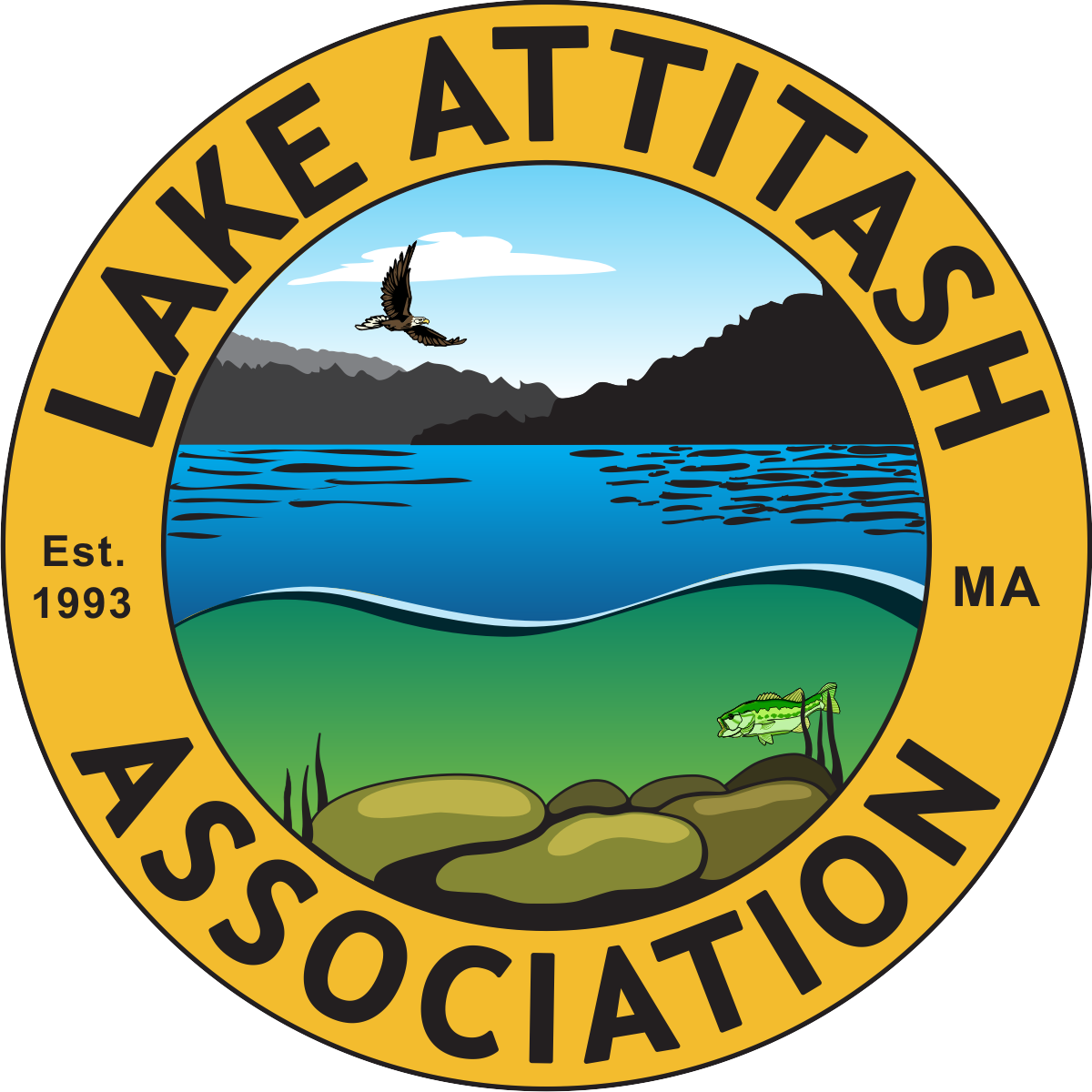Protecting Lake Attitash

April 2020
Dear Friends and Smart Protectors of Lake Attitash

The clear water we now enjoy in Lake Attitash is the result of a major grant award from the U.S. Environmental Protection Agency and the Massachusetts Department of Environment Protection. This grant’s purpose is to mitigate the significant health hazards of blue-green algae or cyanobacteria blooms that used to plague our lake.
In March 2019 our first alum treatment was completed. We will be seeing a second treatment this spring. The excess nutrients that have accumulated over the decades in the sediment of our lake feed the cyanobacteria. The alum treatment settles as a ‘blanket’ on the sediment, sealing in the nutrients so they do not enter the water column and feed the cyanobacteria. The deepest layers of sediment are in the deepest areas of the lake and contain the highest levels of excess nutrients. This supplemental alum treatment will provide an additional layer of protection in the deepest section of the lake.
This one day treatment is expected to take place in May 2020.

What can residents who live in Lake Attitash Watershed do to prolong the benefits of this grant? Our responsibility is to limit the flow of nutrients and pollutants from entering our lake.
This is our watershed:

What is a watershed?
A watershed is an area that drains into a common waterway, such as a stream, lake, estuary, wetland or even the ocean. Watersheds provide our drinking water, habitat for wildlife and the streams and lakes that we use for fishing, boating and swimming.
Why is it so important to manage storm water within our watershed?
Large impervious surfaces such as roofs, driveways and parking areas prevent rain from being absorbed into the earth. As this water passes over these impervious surfaces it picks up sediment loaded with nutrients from fertilizer; bacteria from animal poop; and pathogens and chemical pollutants on the way to the storm drain. Any water that enters a storm drain, or flows from your property to a nearby stream or to the lake is “untreated,” which means that the polluted sediment is not filtered out by the earth or allowed to settle out like it might if it were directed into a raingarden or retention basin. There are many local storm drains that empty untreated runoff directly into Lake Attitash.
What can we do to reduce water use, and help rain water seep into the ground rather than run off into a storm drain or directly into the lake? 4 great ideas!
- Rain Barrels
Rain barrels collect rainwater from your roof gutters. This water can be used for gardening. A rain barrel can save an average of 1300 gallons of water during peak summer months.

Amesbury no longer has a rain barrel program but a quick search on the internet will give you many good local options. They are affordable and now come in many different models to fit your aesthetic needs.
- Rain Gardens
A rain garden is simply a shallow depression in your yard that is planted with native wetland plants, wildflowers, shrubs or grasses. Correctly placed across an area where storm water flows it absorbs the runoff, takes up the nutrients and filters the water. Check out the Lake Attitash Association website for information and contact the LAA for assistance.

- Buffer Gardens
Buffer gardens are planted on the water’s edge and serve as a living filter because they capture many of the pollutants that flow through them. Their root systems hold the soil in place, prevent erosion and provide a beautiful addition to your view.

- Porous Surfaces
When planning or renovating a patio, walkway or driveway, use porous materials like pervious pavers, gravel, sand, or stones when you can. Avoid black top if possible.

If we reduce the amount of unfiltered water running off into Lake Attitash using these 4 methods we will be protecting our lake.
One more thing…..a reminder about dog poop!

The LAA has been getting many complaints about unleashed dogs at the State boat ramp area! It is tempting to just let your dog out without a leash to do its business in this open grassy area but it is illegal, creates a health risk, adds harmful bacteria and nutrients to our lake that can promote algal blooms and is very inconsiderate.
Common courtesy calls for us all to protect walkers by cleaning up after our dogs. It is more than mere courtesy, it is a matter of public health and environmental protection. According to the Massachusetts Executive Office of Health and Human Services pet waste can cause nasty infections in humans, such as Giardiasis (which can cause diarrhea, cramping, fatigue, and weight loss) and Toxocariasis (which can cause vision loss, rash, fever, or cough, and is a particular threat to children exposed to parasite eggs in sand and soil).

And it’s not just the droppings that are a problem. The Massachusetts Department of Environmental Protection warns that dog waste left on lawns, roads, parking lots, beaches, and other surfaces is washed into streams, lakes and ultimately the sea. The solution? Always pick up your dog’s waste and properly dispose of it by flushing it, burying it, or trashing it.

Most department and pet stores sell pet waste bag dispensers and refills at a low cost. Please consider using one of these which can conveniently clip right onto your pet’s leash and provide you with a bag to clean up pet waste wherever you are!
This project has been partially funded with Federal Funds from the U.S. Environmental Protection Agency (EPA) to the Massachusetts Department of Environmental Protection under an s. 319 competitive grant.
